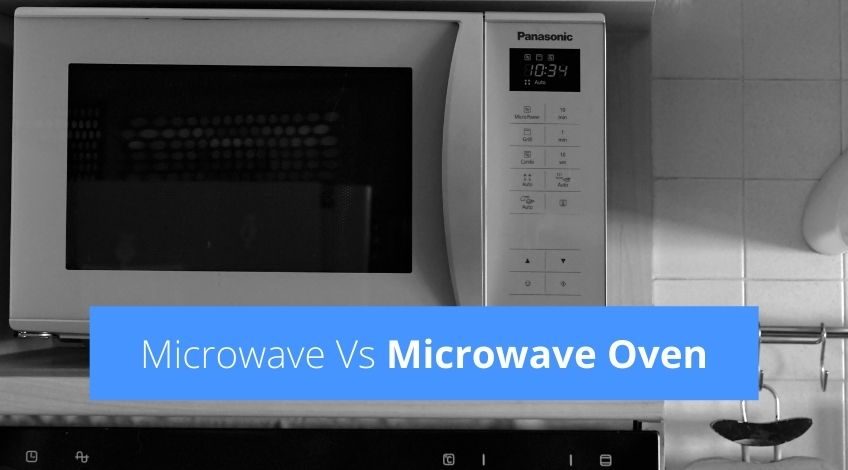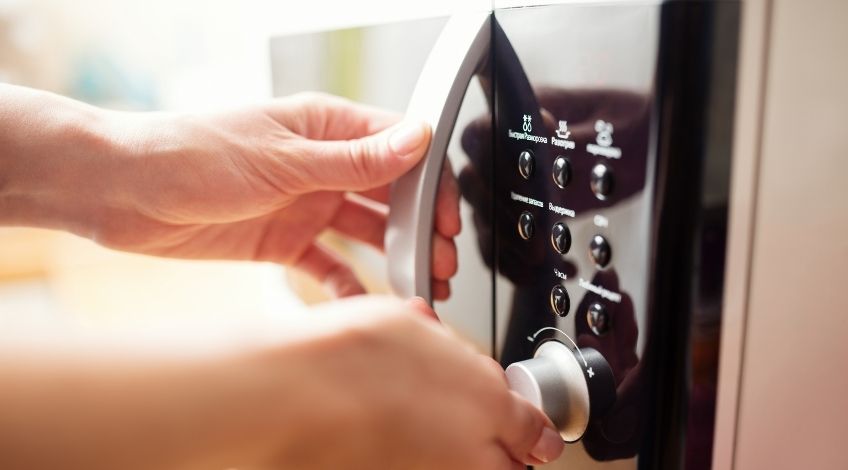
Microwave Vs Microwave Oven – which is better?
If you’re confused as to the difference between a microwave and a microwave oven, keep reading. Depending on which part of the world you live in, these words have different meanings. Here in the United Kingdom a microwave is the abbreviated form of a microwave oven. In other parts of the world combined microwave/convection heaters are often referred to as microwave ovens.
Here in the UK such appliances are usually listed as “microwave combination” or “microwave oven with grill and convection oven”. So to be absolutely clear, let’s look at both and compare their uses, advantages and disadvantages.
What Is A Microwave Oven?
A microwave oven (commonly referred to as a microwave) is an oven powered by electricity that heats food by hitting it with electromagnetic radiation in the frequency of microwaves. The process works in a similar way to rubbing your hands together to produce friction to warm them up when they’re cold.
Microwaves are used primarily to reheat foods that have been previously cooked thoroughly and just need warming up. The food heats up very quickly using microwaves but it does have limitations. Any solid of more than around an inch thick will not convey heat fully through it using a microwave. Microwaves work by heating liquid molecules which pass on that heat to surrounding particles.
Microwaves work well on foods with a high water content as the waves can pass through liquids easier and therefore heats them up rapidly. Microwaves can cause heat pockets in foods which is why there is the need to stir foods halfway through the cooking time to ensure all parts receive sufficient heat.
Microwaves are often used as a method of defrosting foods before cooking in a conventional way. Defrosting is done on a lower power setting in a microwave than cooking say, porridge or reheating cooked foods. The lower power takes longer to defrost but ensures an even rate of defrosting.
What Is A Microwave Combination Oven?
A microwave combination oven is two ovens in one, it works as a microwave and as an oven. This allows you to use it as a microwave but also allows you to grill, bake or steam food as well.Whereas a standard microwave can cook certain foods, it can never roast potatoes for example, the microwave combination oven can, thus giving you the best of both worlds.
A microwave combination oven takes up the same amount of space as a standard microwave which means they are a space saving appliance suitable for almost all kitchens. They use far less energy than a conventional oven and yet share many functions including; the use of a convection oven, grill, steamer and defrost/reheat.

What Is A Conventional Oven?
A conventional oven is usually powered either by gas or electricity and heats food from the bottom of the oven. Working on the principle that heat rises, foods cooked closer to the bottom roast or bake, and foods cooked closer to the top broil.
What Is A Convection Oven?
A convection oven is like a conventional oven with the addition of a fan that circulates the air more evenly around the oven. As the heat is from a single direction it is not uniform (as in a conventional oven) convection ovens allow for use at lower temperatures while still cooking at a faster rate and more evenly than a conventional oven.
Oven Evolution
The first type of oven was a conventional oven which works well but does have a few areas for improvement. Then came the convection oven which removed some of the limitations, then came the microwave which could perform some of the functions of a conventional oven more efficiently. The culmination of all of these ideas is the microwave combination oven otherwise known as the convection microwave oven or microwave oven with grill and convection oven.
So Which Is Best?
In the UK at least, there is no difference between the microwave and the microwave oven. However, there is a better way of utilising that space, and that’s with the microwave combination oven. The microwave combination oven can cook in a number of ways including;
- Microwave
- Grill
- Roast
- Toast
- Bake
- Broil
This gives you almost every cooking option available in any type of oven.
Buyers Guide
Whether you’re in the market for a microwave oven or a microwave convection oven, there are a few points worth considering before making a purchase. These include;

Points To Consider When Buying A Microwave Oven
You need to consider the features offered on the microwave of your choice, features like;
- Controls (Digital or Dial)
- Functions (Power settings, defrost fast cook etc)
- Size (The size of a standard family size microwave is around 25 litres)
- Freestanding or Built-in
- Power
- Price
Controls
Digital controls are more accurate especially for timers etc.But the clock will need resetting before use (if you store the microwave away in a cupboard).
Functions
Most standard microwaves will have basic settings like defrost and a number of various power settings ranging from ¼ power, ½ power, up to full power. But some of the more advanced have onboard processors that will work out the weight and time needed to cook various food stuffs. It’s worth remembering that the more functions the microwave has, the more expensive it will be to purchase.
Size
For a regular family a standard microwave will be sufficient, these offer somewhere between 20 to 25 litres of cooking area. There are larger versions available but you’ll need to take into account the space you have available for storage on your work surface or cupboard etc.
Built-in or Freestanding?
Built-in microwaves have to be fitted inside a cupboard so the sizings will need to be accurate for the space you have available. Freestanding microwaves can be stored on the kitchen work surface permanently if there’s space, or stored in a cupboard and just placed on the work surface when needed.
It is possible to buy brackets that allow freestanding microwaves to be attached to a wall to save space. This effectively turns a freestanding microwave into a semi-built-in microwave and frees up space on the counter top.
Power
The output power of the microwave dictates the speed at which your food will be cooked. The average power size of a microwave is anywhere between 700w to 1000w. Obviously there is a trade off between the time taken to cook and the amount of power consumed during cooking time. But as microwave cooking is around 57% efficient compared to the 17% efficiency of a convection oven this isn’t that important.
Price
Prices range from around £65 to £150 for a standard microwave depending on make, model and functions. With a microwave combination oven prices are higher, starting at around £150 to £250 again depending on make model and function.
Frequently Asked Questions
A microwave oven is the full name of a kitchen appliance that is commonly known as a microwave (the abbreviated form of microwave oven).
Microwaves cook using non-ionising radiation which does not make food radioactive.
Food that’s cooked in a microwave is just as safe as food cooked in a conventional oven. In some cases microwaved food contains more of the original nutrients when compared to foods cooked in a conventional oven.
Also, follow us on Pinterest ...



